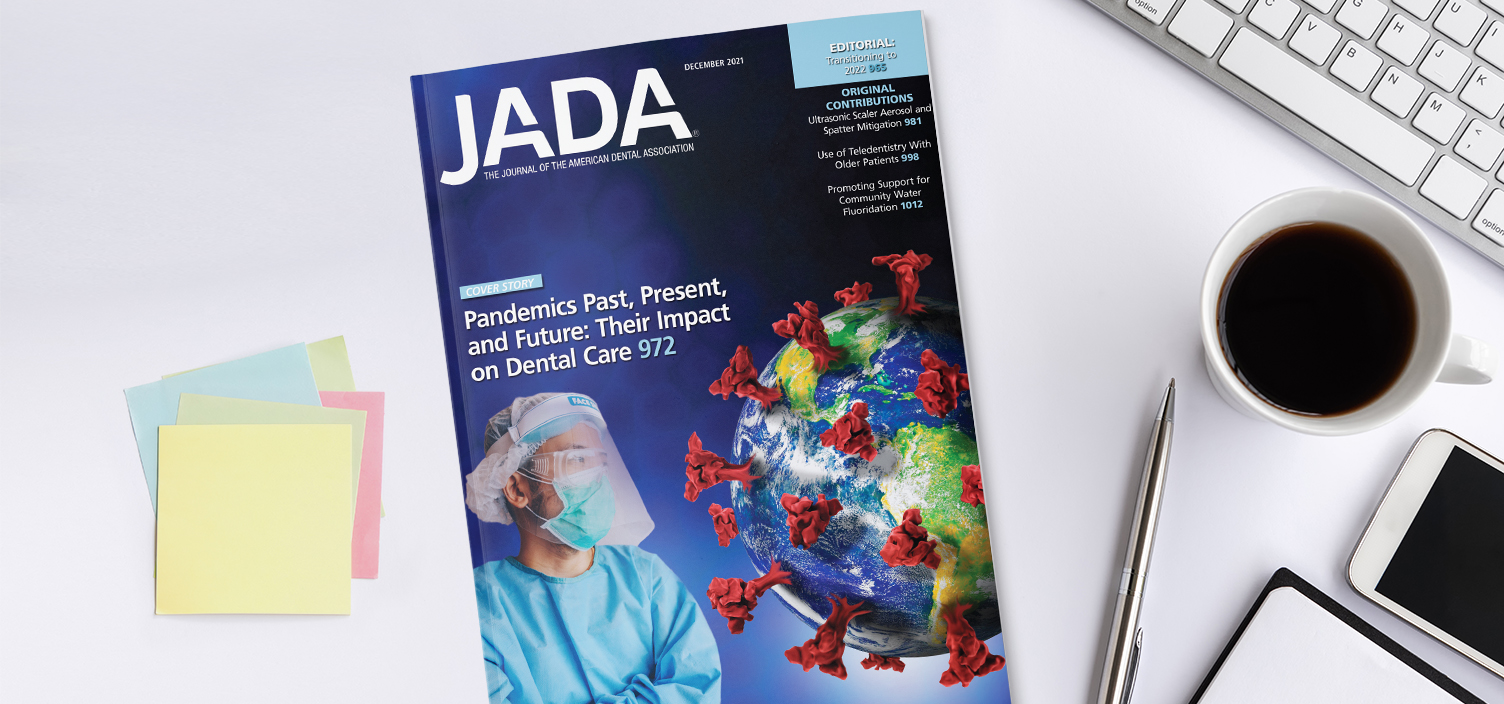December JADA assesses how pandemics affect oral health care
Journal debuts new Oral Science Trends invited reviews

Because COVID-19 may become an endemic disease, the dental community should adopt modified infection control measures, teledentistry and point-of-care diagnostics, among other measures, according to the cover story of the December issue of The Journal of the American Dental Association.
"Pandemics Past, Present, and Future: Their Impact on Oral Health Care," which is JADA's first Oral Science Trends article, reviewed the history of pandemics, the probable reasons for their emergence, and the COVID-19 pandemic and its possible impact on dentistry during the post-pandemic period.
"We are excited to have our first Oral Science Trends invited review published in the December issue of JADA, providing readers with insights into how past, current and future pandemics have and will shape oral health care," JADA Editor-in-Chief Tim Wright, D.D.S., said. "Oral Science Trends will feature invited reviews by leaders who can explain where our current biomedical and clinical sciences are leading to impactful changes in our ability to provide care and improve health."
The article, authored by JADA Editorial Board member Lakshman Samaranayake, D.D.S., D.Sc. (h.c.), professor emeritus and immediate past dean in the Faculty of Dentistry at the University of Hong Kong, and Kausar Sadia Fakhruddin, B.D.S., lecturer in the College of Dental Medicine at the University of Sharjah in the United Arab Emirates, found there are many reasons why pandemics are caused by new infectious organisms that cross from animals to humans, including population explosion, mass migration and more.
"Coupled with global warming and the resultant loss of habitats, such vicissitudes of humans and nature lead to microbes evolving and mutating at an exponential pace, paving the way for pandemics," the authors said in the article. "The contemporary epidemics and pandemics beginning with the HIV pandemic have modulated dentistry beyond recognition, now with assiduous and robust infection control measures in place."
They said clinical environments could be made even safer in the future by predicting how pathogens evolve and priming the human immune system for the next wave of microbial combatants through vaccines produced using deep mutational scanning, in which artificial intelligence and machine learning can predict viral variants before their arrival.
Other articles in the December issue of JADA discuss ultrasonic scaler aerosol and spatter mitigation, use of teledentistry with older patients, and promotion of community water fluoridation.
Every month, JADA articles are published online at JADA.ADA.org in advance of the print publication.



